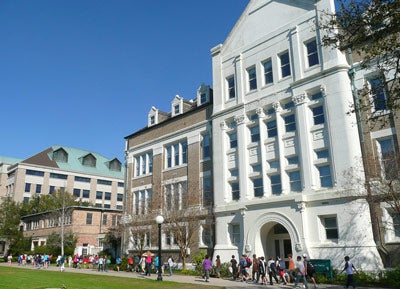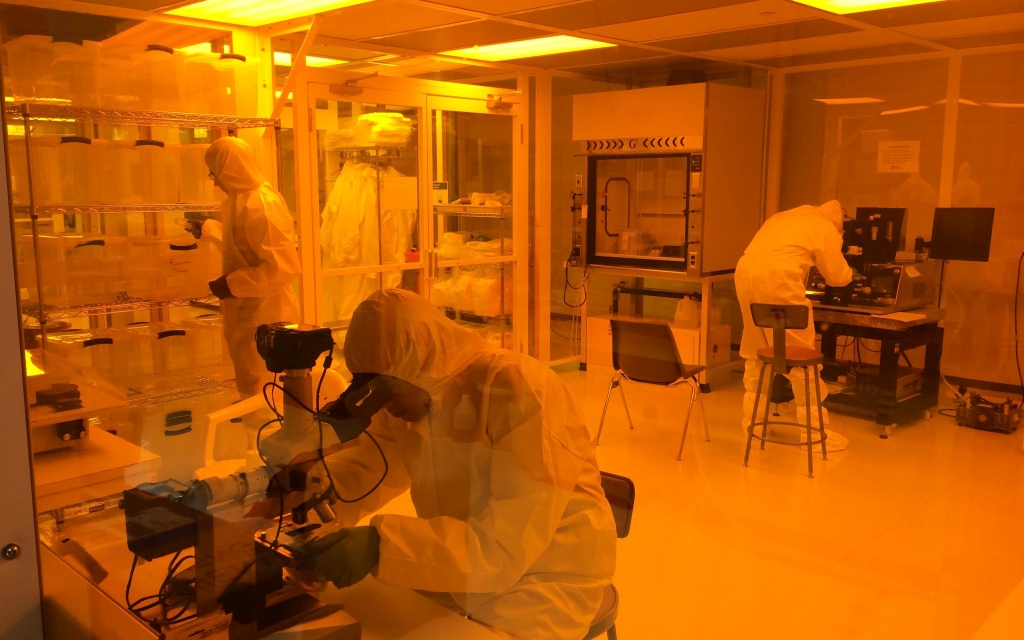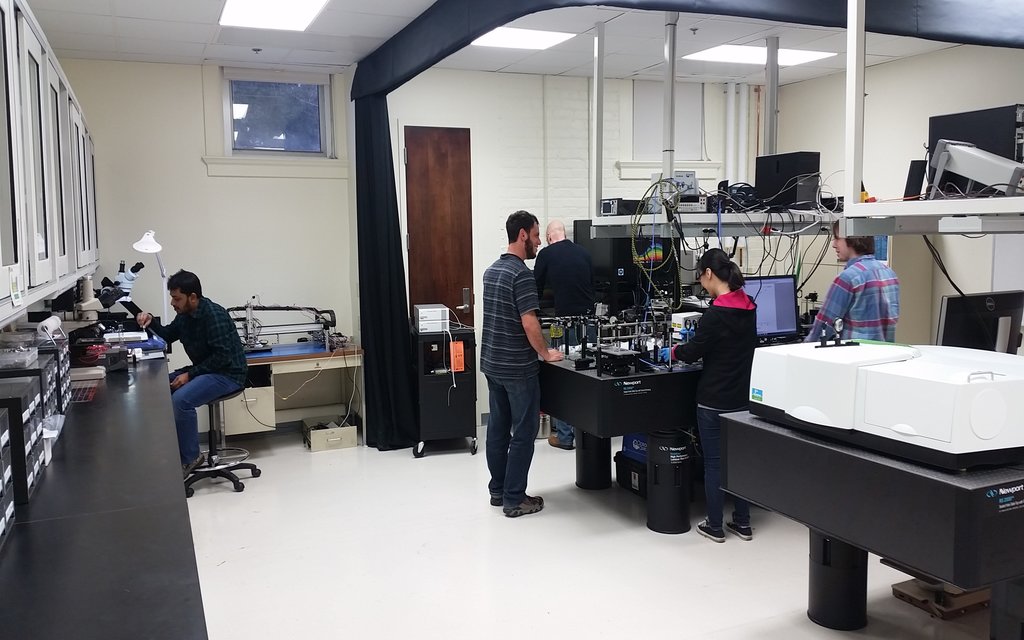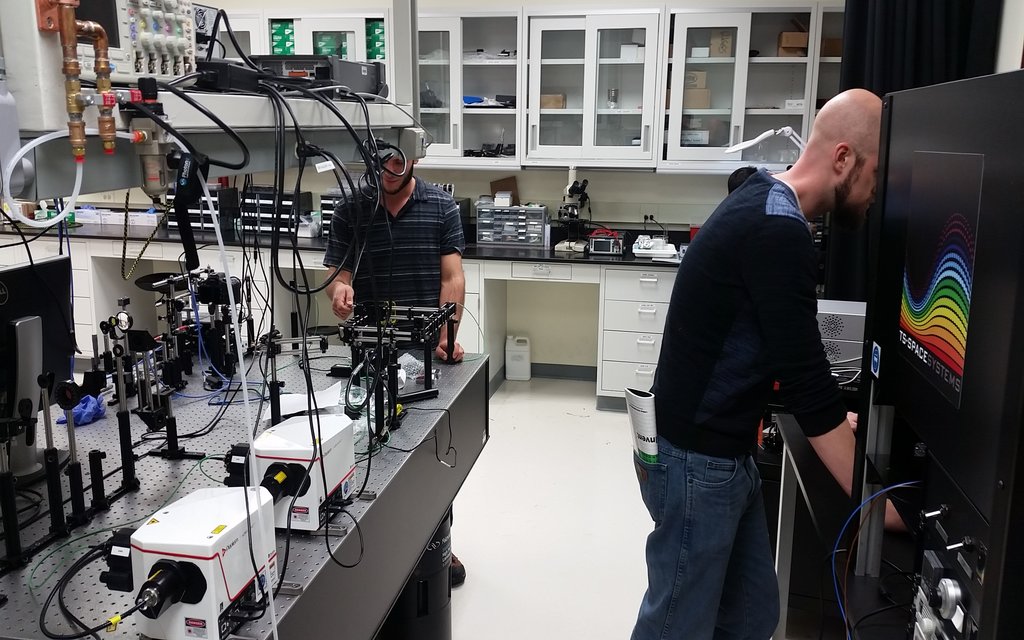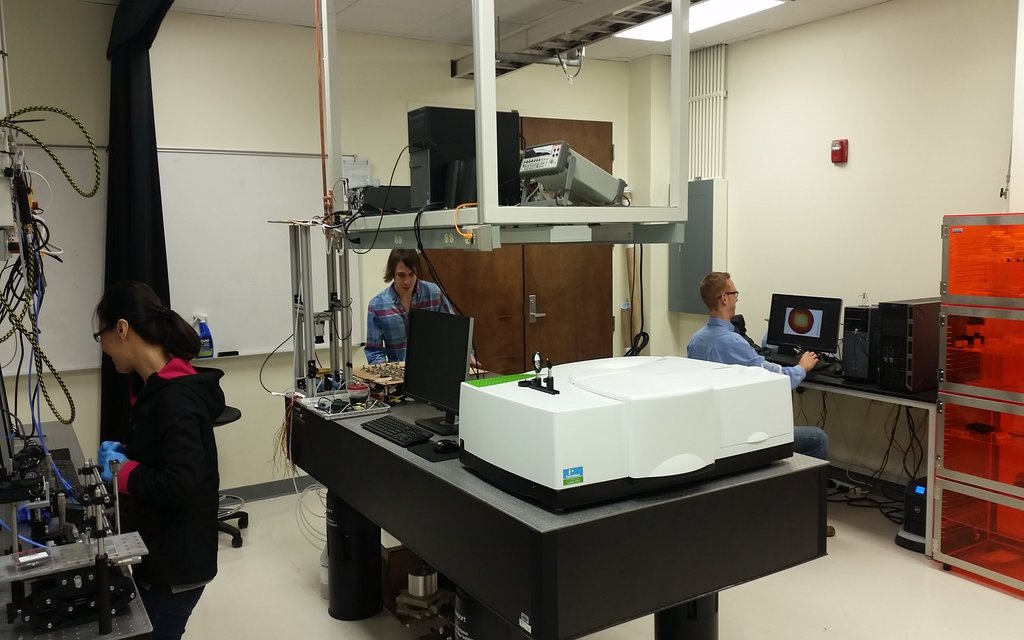Synthesis:
The Escarra group is a major user of the Tulane Micro/Nanofabrication Facility (MNFF), a shared facility located in 109 Stanley Thomas Hall that is run by Tulane’s Coordinated Instrumentation Facility (CIF). The MNFF includes a class 1000 cleanroom used for fabricating micro and nanoscale materials and devices. The facility includes the following equipment:
- Suss MJB4 mask aligner
- Raith Voyager 100 electron beam lithography system
- AJA ATC Orion sputtering system
- AJA ion miller
- Angstrom Engineering Nexdep electron-beam evaporator
- CVD/PVD tube furnace
- Trion Phantom III ICP reactive ion etcher
- Sentrotech vacuum furnace
- Allwin21 Corp. AccuThermop AW 610 rapid thermal annealer
- 1510 Branson ultrasonic cleaner
- Photolithography space, wet hoods, ultra-clean hoods, etc.
The group also uses an electron-beam lithography system housed in CIF laboratories in Stern Hall.
In addition to that, the Escarra group shares a pulsed laser deposition system with the Chrisey Group (located in 101 Stanley Thomas Hall).
The group also has access to a makerspace and professional machining services.
Characterization:
The Escarra group’s main laboratory space, located in 107 Stanley Thomas Hall, is dedicated to optical and electronic characterization of materials and devices. The lab includes the following characterization tools:
- Fianium super-continuum laser and Photon, Etc. laser line tunable filters (LLTFs) capable of emitting light from 390 nm to beyond 2400 nm in wavelength.
- Custom-designed three-beam Mach Zehnder interferometer capable of continuously-referenced measurement
- Laser and spectrometer coupled Zeiss optical microscope with scanning stage for spatial mapping of optoelectronic properties
- TS-Space Systems unisim tunable solar simulator
- UV-Vis-NIR spectrometer (Perkin-Elmer Lambda 750S) with integrating sphere
- Thermal testbed including an infrared camera
- Fiber-based UV-Vis-NIR spectrometer (Ocean Optics)
- Solar module building station
- LitePlacer pick and place machine (SMT component placement system)
- Leica MZ6 wire bonder
The group has numerous other optical set-ups, including a custom built robotic goniospectrometer.
In addition to the group’s lab space in 107 Stanley Thomas, the group also has access to the following characterization tools in the neighboring Tulane Micro/Nanofabrication Facility (MNFF) in 109 Stanley Thomas Hall:
- Bruker D8 Discover X-ray diffraction system
- Veeco multimode atomic force microscope
- J. A. Woollam spectroscopic ellipsometer
- KLA Tencor stylus profilometer
- Zegage optical profilometer
- Varian 7000 FT-IR spectrometer
- Olympus optical microscope with camera and Linkam heated stage
The group also has access to other shared facilities, including SEMs, TEMs, and confocal microscopy.
Finally, the group has access to an outdoor concentrated solar testbed at the University of San Diego, in partnership with our collaborators there
Computation:
Computers: The Escarra group has a high performance simulation computer (Dell PowerEdge T620, with two Intel Xeon 2.6GHz 8-core processors, 128 GB memory, 4 TB storage) as well as access to supercomputer clusters at Tulane. We also have an array of desktop computers for basic simulations, data analysis, running experiments, etc.
Software: We use COMSOL, a finite element method package, to do a wide range of multiphysics simulations. We have access to COMSOL’s core, RF, Ray Optics, Heat Transfer, Fluid Dynamics, Optimization, and LiveLink for MATLAB modules. We also use Origin, MATLAB, LabView, OpenFilters, SolidWorks, Adobe products, and more.
Office:
The Escarra group offices are all located in Stanley Thomas Hall. The group has access to an undergraduate design and prototyping lab (227 Stanley Thomas Hall) with workstations for use by undergraduate researchers.
